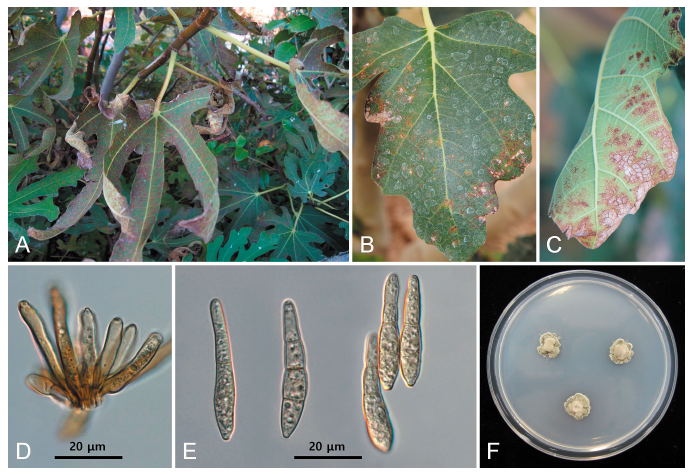Abstract
A cercosporoid fungus associated with angular leaf spots on the leaves of common fig (
Figures & Tables

Fig. 1. Angular leaf spots caused by on common fig (). (A) Leaves were infected, decreasing vigour of the plant. (B and C) Close-up view of leaf lesions, showing grayish patches on the lesion due to heavy fructification. (D) Conidiophores. (E) Conidia. (F) One-weekold colony of growing on a potato dextrose agar at 25℃.


